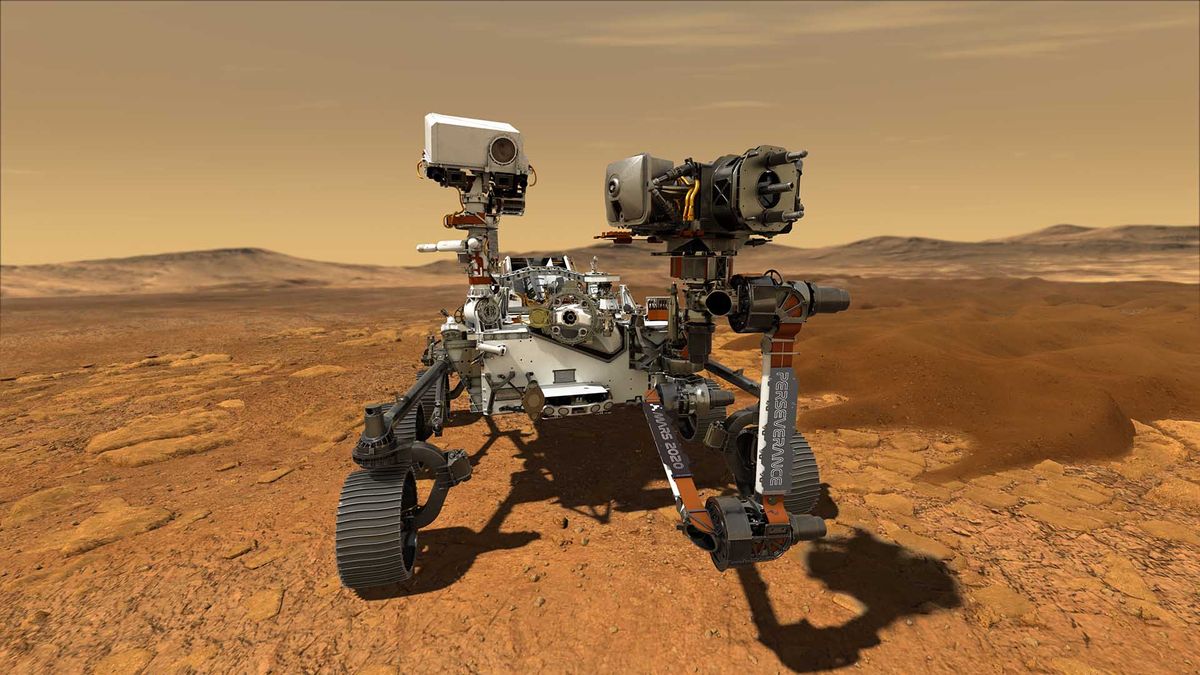
NASA is determined to get its life-hunting Mars rover off the ground this summer despite the coronavirus outbreak.
Space agency officials remain optimistic that the car-size Perseverance rover, the centerpiece of the Mars 2020 mission, will be ready to launch during a three-week window that opens on July 17. The stakes are high, because such windows come just once every 26 months, when Earth and the Red Planet align properly for interplanetary missions.
"We’re going to ensure that we meet that launch window in July," Lori Glaze, the director of NASA's Planetary Science Division, said during a virtual town hall meeting on March 19, according to SpaceNews. "As of right now, and even if we go to a next stage of alert, Mars 2020 is moving forward on schedule. And everything is, so far, very well on track."
More: NASA's Mars 2020 rover Perseverance in pictures
For example, engineers recently integrated two key pieces of Perseverance hardware earlier this month at NASA's Kennedy Space Center (KSC) in Florida, where the rover is being prepped for launch. Those pieces are both related to one of Perseverance's core tasks: collecting pristine samples for eventual return to Earth.
One is the Bit Carousel, which harbors nine drill bits that the rover will use to bore into Red Planet rock. The other is the seven-motor, 3,000-part Adaptive Caching Assembly, which the rover will use to snag, seal and store samples.
"With the addition of the Adaptive Caching Assembly and Bit Carousel, the heart of our sample collection system is now on board the rover," Mars 2020 deputy project manager Matt Wallace, of NASA's Jet Propulsion Laboratory in Pasadena, California, said in a statement.
"Our final but most crucial elements to install will be the sample tubes that will contain the first samples that will be brought from another planet back to Earth for analysis," Wallace added. "We will keep these pristine until we integrate them in a couple of months."
Such progress has been hard-won, given how much the coronavirus pandemic has roiled NASA (along with the rest of society). Like most agency facilities, KSC is at Stage 3 in NASA's "response framework," meaning that telework is required for all employees, with the exception of "mission-essential personnel" such as those working on Perseverance. (Three NASA facilities — Ames Research Center in Silicon Valley, Stennis Space Center in Mississippi and the Michoud Assembly Facility in Louisiana, are at Stage 4, the highest level. At Stage 4, facilities are closed, except to protect work and critical infrastructure.)
"The teams are doing, frankly, hero's work to keep us on track for a July launch," NASA Associate Administrator for Science Thomas Zurbuchen said in another virtual town hall on Friday (March 20).
"We're working with Armstrong and Wallops to see if we can help find necessary personnel for KSC to help with processing — something that we refer to amongst ourselves as Perseverance Airlines," he added, referring to NASA's Armstrong Flight Research Center in California and Wallops Flight Facility in Virginia.
But Zurbuchen also stressed that the agency will suspend Perseverance launch prep if the coronavirus situation escalates to the point that workers' health and safety are at risk.
If the rover does indeed launch this summer, it will land in February 2021 inside Mars' 28-mile-wide (45 kilometers) Jezero Crater, which harbored a lake and a river delta billions of years ago. Perseverance will search the area for signs of long-dead Mars life and snag several dozen samples.
NASA and the European Space Agency will work together to bring these pristine pieces of Mars to Earth, which could happen as early as 2031. Scientists around the world will then examine the samples in great detail, looking for potential evidence of life and anything else that catches their curious eyes.
The Mars 2020 mission will do a variety of other work as well. For example, Perseverance is designed to help pave the way for human exploration of the Red Planet. The rover carries a ground-penetrating radar instrument, which will hunt for deposits of near-surface water ice, and a technology demonstration that will generate oxygen from Mars' carbon-dioxide-dominated atmosphere.
The mission carries another technology demonstration, too — a small helicopter that aims to show that rotorcraft can explore the Martian air.
Another life-hunting rover was supposed to launch toward Mars this summer as well — Rosalind Franklin, which is part of the European-Russian ExoMars project. But problems with the mission's parachute system and other issues cannot be fixed in time to make this summer's window, ExoMars team members announced this month, so Rosalind Franklin will now lift off in late 2022.
Mike Wall is the author of "Out There" (Grand Central Publishing, 2018; illustrated by Karl Tate), a book about the search for alien life. Follow him on Twitter @michaeldwall. Follow us on Twitter @Spacedotcom or Facebook.
Bagikan Berita Ini














0 Response to "NASA's Mars rover Perseverance still on track for July launch despite coronavirus outbreak - Space.com"
Post a Comment